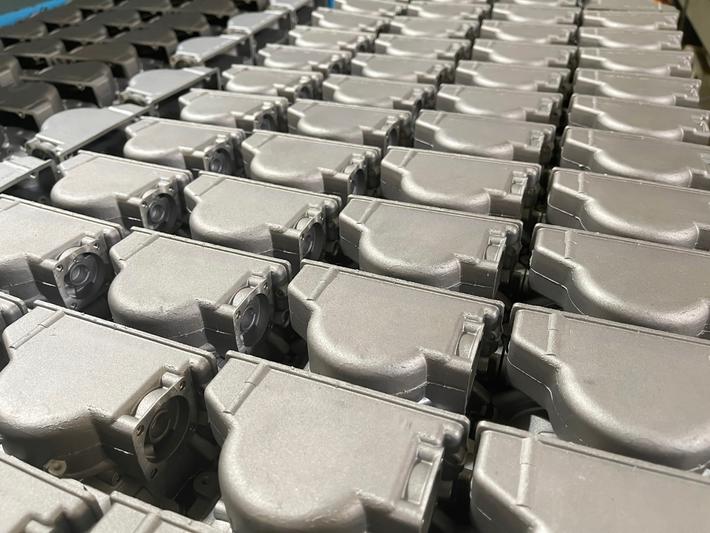
Recycled aluminum in die casting: a strategic resource for the environment and industry
Aluminum is one of the most valuable resources in the circular economy, thanks to its ability to be reused almost infinitely without losing its original properties. It is true that the production of primary aluminum is characterized by a high environmental impact, with an average global emission of about 16 tons of CO2 per ton of metal produced; on the other hand, the metal obtained from the remelting of scrap, both old and new, has an average carbon footprint of about 2 tons of CO2 per ton of aluminum recovered, a value that improves based on the energy mix used and the quality of the scrap. This makes aluminum recycling by die casting a real "energy bank", essential for a sustainable future. It is therefore obvious that the European Union, which is heavily dependent on the import of raw materials, has among its objectives the optimization of the collection and reuse of recycled aluminum for die-casting.
Italy is a leader in aluminum recycling: numbers and advantages
In particular, Italy stands out for its capacity to produce recycled aluminum: according to data from Assiral, the Italian Association of Aluminum Refiners, our country recently produced around 717 thousand tons of recycled aluminum in a year, surpassing Germany (473 thousand tons) and Spain (300 thousand tons). Considering that the total amount of aluminum transformed in Italy, including extrusions, rolled products and foundry ingots, was around 1.8 million tons last year, the crucial role of aluminum recycling in die casting to meet domestic demand is evident.
The advantages of aluminum recycling are many and have a significant impact on both the environment and the industrial economy. The reduction in CO2 emissions from 16 to 2 tons per ton of metal represents an 87.5% improvement in terms of environmental impact, making this process fundamental for the sustainability of aluminum die casting.
Challenges and opportunities for the future of the sector
Beyond the progress made, the system of recovery and recycling of aluminum can still improve. The recent study "The urban mines of aluminum" carried out by Duccio Bianchi for CiAl - Consorzio imballaggi alluminio, highlights that approximately 40% of the aluminum present in urban waste is not actually recovered. This shows that there is still significant room for improvement in the collection and valorization of this resource.
Another critical aspect to keep in mind is the trading of aluminum scrap: this is a secondary raw material of strategic importance, and it is clear how important it is to appropriately regulate its global trading to ensure its internal use without the risks, for example, of uncontrolled exports that reduce its availability for the European industry. On the subject of trading, the more than indispensable readjustment of tariffs on the primary metal is always alive and closely connected, the indispensable good of which we produce in the EU only less than 15% of what is needed, which we are therefore forced to import from non-EU countries. This is clearly a real tax on consumption to the detriment of aluminum transformers in the EU, forced to pay an extra cost estimated by the LUISS University of Rome at 20 billion euros over 20 years.
Growth and sustainability prospects for aluminum die casting
All this in the context of future growth forecasts, which, according to studies by the International Aluminium Institute, indicates a global use of light metal in 2050 of 150 million tons of raw aluminum (compared to 100 million tons last year), of which 55% secondary aluminum and 45% primary, therefore growing everywhere, including in Europe. This scenario highlights how the sustainability of aluminum die casting will increasingly depend on the effectiveness of recycling processes and the ability to optimize the use of recycled aluminum in die casting.
In conclusion, the percentage of aluminum scrap recycling can and must still increase at a European level, these will have to be appropriately kept under control from the point of view of regulations and international trading. It is important to remember, however, that they cannot in any way replace the primary metal, which is essential to cover the demand for raw aluminum in the EU.
The real problem of the absurd extra costs self-inflicted on the entire European downstream industry of light metal by the prehistoric tariff on imported primary metals still needs to be solved; we cannot continue to pay additional costs on the import of a starting material that we do not have and that we will increasingly need. Decisions are finally needed, all this to protect and develop an industrial system that has been working for over a century and courageously manages to be an example at a global level, maximizing the benefits of aluminum recycling for the entire production chain.
Source: A&L Aluminium Alloys Pressure Diecasting Foundry Techniques


